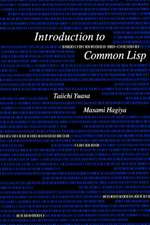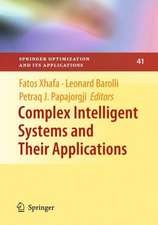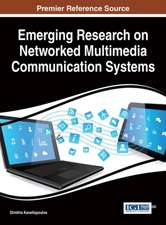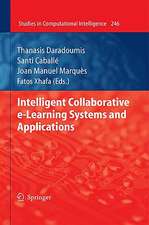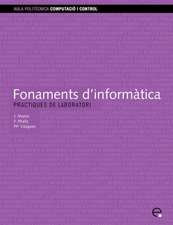IoT and Spacecraft Informatics: Aerospace Engineering
Editat de K.L. Yung, Andrew W. H. IP, Fatos Xhafa, K.K. Tsengen Limba Engleză Paperback – 29 mar 2022
This book is for researchers, PhD students, engineers and specialists in aerospace engineering as well as those in computer science, computer engineering or mechatronics.
- Presents state-of-the-art research on IoT and spacecraft technology
- Provides artificial intelligence-based solutions and robotics for space exploration applications
- Introduces new applications and case studies of IoT and spacecraft informatics
Preț: 802.25 lei
Preț vechi: 1051.32 lei
-24% Nou
Puncte Express: 1203
Preț estimativ în valută:
153.52€ • 164.16$ • 127.99£
153.52€ • 164.16$ • 127.99£
Carte tipărită la comandă
Livrare economică 10-24 aprilie
Preluare comenzi: 021 569.72.76
Specificații
ISBN-13: 9780128210512
ISBN-10: 0128210516
Pagini: 376
Ilustrații: 40 illustrations (10 in full color)
Dimensiuni: 152 x 229 mm
Greutate: 0.5 kg
Editura: ELSEVIER SCIENCE
Seria Aerospace Engineering
ISBN-10: 0128210516
Pagini: 376
Ilustrații: 40 illustrations (10 in full color)
Dimensiuni: 152 x 229 mm
Greutate: 0.5 kg
Editura: ELSEVIER SCIENCE
Seria Aerospace Engineering
Public țintă
Aerospace engineering Researchers, PhD students, engineers and specialists in the field comprising space systems, computer science, communication, data science, data engineering, spacecraft engineering.Engineers and graduates in computer science, computer engineering, or mechatronics who show interests in both of space engineering and IoT.
Cuprins
1. Artificial intelligence approach for aerospace defect detection using single-shot multibox detector network in phased array ultrasonic
2. Classifying asteroid spectra by data-driven machine learning model
3. Recognition of target spacecraft based on shape features
4. Internet of things, an insight to digital twins and case studies
5. Subspace tracking for time-varying direction-of-arrival estimation with sensor arrays
6. An overview of optimization and resolution methods in satellite scheduling and spacecraft operation: description, modeling, and application
7. Colored Petri net modeling of the manufacturing processes of space instruments
8. Product performance model for product innovation, reliability and development in high-tech industries and a case study on the space instrument industry
9. Monocular simultaneous localization and mapping for a space rover application
10. Reliability and health management of spacecraft
2. Classifying asteroid spectra by data-driven machine learning model
3. Recognition of target spacecraft based on shape features
4. Internet of things, an insight to digital twins and case studies
5. Subspace tracking for time-varying direction-of-arrival estimation with sensor arrays
6. An overview of optimization and resolution methods in satellite scheduling and spacecraft operation: description, modeling, and application
7. Colored Petri net modeling of the manufacturing processes of space instruments
8. Product performance model for product innovation, reliability and development in high-tech industries and a case study on the space instrument industry
9. Monocular simultaneous localization and mapping for a space rover application
10. Reliability and health management of spacecraft












